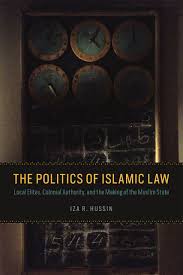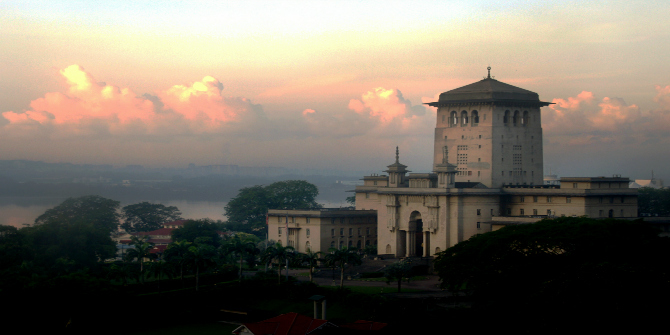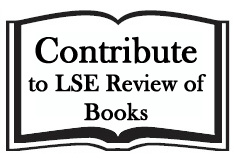In The Politics of Islamic Law: Local Elites, Colonial Authority and the Making of the Muslim State, Iza R. Hussin traces a riveting history of Islamic law as it encounters, and is inevitably transformed by, British colonialism in Malaya, Egypt and India. It is a work of unique critical sensibilities, setting the scene for future interdisciplinary research of colonial and postcolonial Islamic law as fruitful analytical categories, finds Vanja Hamzić.
The Politics of Islamic Law: Local Elites, Colonial Authority and the Making of the Muslim State. Iza R. Hussin. University of Chicago Press. 2016.
 The field of Islamic studies has been of late in a state of renaissance. Not only have remarkable young scholars emerged in virtually all of its subfields, including that of Islamic law, bringing a much-needed breadth of new ideas about Muslim lifeworlds past and present, but one can also discern a palpable tendency to bring Islamic studies into meaningful and mutually enriching conversation with major contemporary critical discourses in law, politics, anthropology, art history and, of course, history itself. The great beauty of Iza Hussin’s intellectual enterprise is that it achieves all that in a single book — the newly-published The Politics of Islamic Law: Local Elites, Colonial Authority and the Making of the Muslim State.
The field of Islamic studies has been of late in a state of renaissance. Not only have remarkable young scholars emerged in virtually all of its subfields, including that of Islamic law, bringing a much-needed breadth of new ideas about Muslim lifeworlds past and present, but one can also discern a palpable tendency to bring Islamic studies into meaningful and mutually enriching conversation with major contemporary critical discourses in law, politics, anthropology, art history and, of course, history itself. The great beauty of Iza Hussin’s intellectual enterprise is that it achieves all that in a single book — the newly-published The Politics of Islamic Law: Local Elites, Colonial Authority and the Making of the Muslim State.
While the unifying thread of this remarkable work is British colonialism proper in Malaya, Egypt and India, and its aftermath in a postcolony (Malaysia), it can also be read as a study in a new type of ‘comparativism’ — one that is no longer shackled in narrow disciplinary ambits such as ‘comparative politics and historical institutionalism’ (213), but which thrives instead on critical comparisons of ideas about law, politics and the state akin to, and inspired by, such trans-disciplinary intellectual traditions as postcolonial studies and the jurisprudence of violence. It is, therefore, no surprise that Hussin finds Islamic law after the colonial encounter to be both ‘jurispathic and jurisgenerative’ (i.e. capable of both destroying the ‘old’ and creating ‘new’ meanings of law; 29, in reference to Robert Cover) in its incurable postcolonial condition. What is, however, remarkable is her great gift to tell the story of such law (and the polities and human subjectivities it shaped) in an erudite and deeply engaging manner that is, at the same time, accessible to non-specialist readers.
Primarily, The Politics of Islamic Law mines ‘state archives, libraries, universities, and museums in the United Kingdom, Malaysia, Singapore, and the United States’ (21) for sources in Malay, English and Arabic that relate to the colonial un-making and re-making of Islamic law in the lands of the Middle East, South Asia and Southeast Asia under direct or ‘indirect’ British rule, especially Malaya, Egypt and India. These sources, which Hussin aptly names ‘artifacts’, are then divvied up and analysed in three thematic sets — treaties, trials and representations — each comprising a separate chapter in the book. Thus, Chapter Three zooms in on colonial treaties that facilitated the all-important division of jurisdiction in the state between British colonial authorities and local Muslim elites; Chapter Four turns to colonial Islamic law in practice by means of peculiar formal trials; while Chapter Five analyses an eclectic mix of Muslim colonial portraiture, constitutions and publications to illustrate an existential crisis embedded in the very way that colonised Muslim populations, and especially their elites, saw themselves in this period.
 Image Credit: Sultan Ibrahim Building, Johor, Malaysia (Bernard Spragg NZ Public Domain)
Image Credit: Sultan Ibrahim Building, Johor, Malaysia (Bernard Spragg NZ Public Domain)
These three artefactual formations provide for Hussin a springboard for ‘the paradox of Islamic law’ — a thesis elaborated with respect to British Malaya, British India and Egypt under British occupation in Chapter Six, and with a reference to post-independence Malaysia in Chapter Seven. The paradox, for Hussin, lays in the fact that the institutional marginalisation of Islamic law at the hands of the colonial state was readily, and cunningly, accompanied by its symbolic centralisation. The result was a near-demise of whatever was known as pre-colonial Islamic law (which, in a way, is a restatement of the Hallaq thesis on the death of post-classical sharīʿa) and the concomitant rise of local Muslim elites as the custodians of hybrid colonial and postcolonial Islamic legal regimes, which resembled little, if at all, the Islamic law of the past.
The paradox of colonial Islamic law relied, in turn, on an equally paradoxical ‘statecraft’. ‘By the end of the nineteenth century’, writes Hussin, ‘the Muslim state was two things — one, an administrative state that upheld Islamic law in matters of personal status’ and ‘two, an individual condition of an Islam that was marked increasingly by adherence to a textualized [sharīʿa] organized around the marital family’ (203). And it is in this particular statecraft — captured in the ambiguity of the Perso-Arabic term-of-art siyāsa that simultaneously denotes ‘statecraft’, ‘governance’ and (just) ‘punishment’ — that Hussin locates the politics of Islamic law (171), a politics of paradox par excellence:
The institutionalized politics of paradox, borne out of the colonial encounter, produced through ongoing jurisdictional politics, and maintained through continuing local investments in the Muslim state as an individual and collective good, guarantee the continuity of the politics of Islamic law. Further, the hybrid nature of this law, and these states, indicates a trajectory for the future in which paradox will continue to play a productive political role — an Islamic legal politics that is a matter of elite negotiation locally, but tightly interwoven into religious, economic, and political networks worldwide; an Islamic legal politics that is highly ambivalent, taking on the language and power of the state in order to contest its values, its conduct, and its actors; an Islamic legal politics active at multiple levels — in the education and culture of its professionals, in the language and institutions of the state, in the strategies of activists and opponents, as well as never limited to, the text of the law (265).
While The Politics of Islamic Law is a fine example of the idea, explicitly endorsed by Hussin, that ‘[l]aw makes politics, and politics makes law’ (13), it is also a work of rare ethnographic sensitivity, akin to that of Brinkley Messick (whose oeuvre the author repeatedly praises in the book), in that it pays due respect to transformations in law’s textual forms (i.e. ‘processes of textualization, codification, and officialization that were the hallmark of colonial state formation’ (13)) as well as in law’s elite socialities. Therefore, one can only hope that Hussin’s future work will also relate to what, by her own admission, is missing in this book — a ‘study of how the law worked in everyday life in India, Egypt, and Malaya’ (23). Still, as a crossroads of disciplines, discourses, colonial and postcolonial practices, The Politics of Islamic Law is a remarkable book, and one that is destined to become a seminal reading for new directions in postcolonial theory of Islamic law.
Dr Vanja Hamzić is a Senior Lecturer in Legal History and Legal Anthropology at SOAS, University of London and a Member of the School of Social Science in the Institute for Advanced Study at Princeton. His most recent book is Sexual and Gender Diversity in the Muslim World: History, Law and Vernacular Knowledge (London: I.B. Tauris, 2016; Islamic South Asia series).
Note: This review gives the views of the author, and not the position of the LSE Review of Books blog, or of the London School of Economics.









